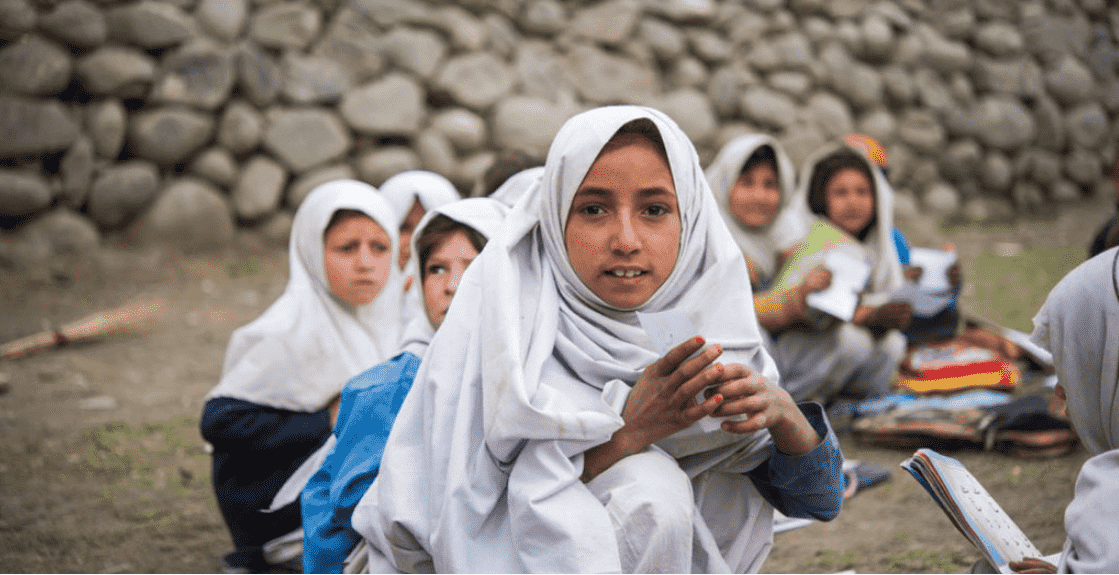In this era of fierce competition in the education sector, individuals globally strive for high quality education, with some pursuing multiple degrees. Yet, in the disadvantaged region of Central Kurram, students face a severe lack of educational institutions. These innocent students are forced to travel great distances to access their fundamental right to education.
In Central Kurram, many regions lack even a single school, compelling students to travel 3 to 4 kilometers daily to neighbouring areas for education. Hayatullah Majroh, a teacher in one of Central Kurram’s schools, expressed his concern, ‘It is exceedingly difficult for both students and teachers to undertake a daily journey of 3 to 4 kilometers. From one area alone, 200 students make this arduous trip each day. This is a pressing issue that demands immediate attention from the relevant authorities. It cannot be ignored, as it pertains directly to the future of our children.’
It is evident that whenever there is an issue, it invariably affects women in some way. In the entire Central Kurram region, there are only two higher secondary schools, and they are both for boys. Dr. Malik Bilal Khan, an active social worker of Central Kurram says, ‘I don’t think there is any high school for girls, higher secondary school is very far that we can’t even dream about it.’
Central Kurram is home to 56 primary schools for girls, of which 21 are currently closed. Out of these schools, 19 are single-teacher institutions. The tehsil has a total of 62 teachers, 19 of whom are government employees. In terms of middle schools for girls, there are 14 in total, but 10 of these remain dysfunctional. There are just 2 high schools for girls which are functioning abysmally. There is no higher secondary school for girls in Central Kurram.
For boys, there are 120 primary schools, 26 middle schools, 11 high schools, and 2 higher secondary schools, but that must be noted is that more than half of these educational institutions are either completely closed or not functioning in a satisfactory manner.
Olas Chamkani, a dedicated teacher in Central Kurram, expressed his concern over the absenteeism of female teachers from Upper Kurram, who are assigned to schools in the central region. He lamented that their frequent absences are severely undermining the educational prospects of young girls striving to receive an education. The lack of commitment from these teachers is not just a failure of duty but a significant blow to the hopes and future of these girls.
Mir Jahan, one of the senior instructors revealed a concerning state of affairs in Central Kurram’s educational sector. He highlighted that most schools are non-operational, and even the functioning ones suffer from teachers neglecting their duties. The overall educational landscape in the region is in disarray. Mir Jahan recounted that last year, they protested to secure adequate funding for improving educational institutions and hiring more teachers. The authorities had promised substantial financial support, but ultimately, they reneged on their commitment, providing only minimal funds. Unfortunately, even these limited resources were misappropriated by corrupt officials within the educational department.
When we attempted to inquire about the well-being and opinions of some students regarding the fragmented education system, we were deeply saddened by their responses. These students, with profound disappointment, expressed that they are not like other students who dream big about their future. They admitted to being extremely disheartened, seeing no prospects for themselves.
The parents of these students shared that in their village, those who are financially well-off send their children to cities like Peshawar, Islamabad, or Karachi to pursue education. However, the majority of the village’s population cannot afford such opportunities. Most parents, constrained by their circumstances, have resigned to entrusting their children to the mercy of fate.
The stark contrast between the opportunities available to children from affluent families and those from impoverished backgrounds is disheartening. It highlights the dire need for systemic changes and support for education in rural areas. These children, brimming with potential, deserve equal opportunities to dream as well as achieve. The current state leaves them despondent and uncertain about their future, a future that could be promising with the right support and resources. Their stories call for immediate attention to bridge the educational divide and provide hope and opportunities to every child, regardless of their socio-economic status.
It is imperative for the current government and the relevant departments and authorities to address this issue and take concrete steps towards its resolution. Education is every child’s fundamental and constitutional right, a right owed by the state. These children are the future stewards of nation, but if the state continues to deprive them of their basic rights, it risks fostering a sense of resentment and alienation. This resentment could potentially lead these children towards anti-state activities. Today, if poverty compels their parents to abandon them to fate, tomorrow these same children may abandon their state in return. The currently flawed educational system often drives Pakistani children to seek opportunities abroad, adopting any means, lawful or otherwise, to do so.
The writer is our Editorial Assistant and journalist based in Peshawar.



